Identifying Lawn Diseases in Florida
Florida's warm, muggy weather is perfect for lawn pests and diseases, turning your green paradise brown and patchy. Spotting the troubling signs of brown grass, weird spots, or thin areas is essential.
Fight back with smart lawn care—think less watering, careful mowing, and the right fungus fighters. Remember, how you treat your turf can make or break its health.
Want a lush lawn that's the envy of the neighborhood? Stick around for tips to keep your Florida lawn looking top-notch, without the fuss.
Key Takeaways
- Lawn diseases in South Florida are influenced by humidity, temperature, soil moisture, and grass type, creating conditions ripe for disease.
- Common lawn diseases in Florida include Rust Diseases, Brown Patch, Dollar Spot, Fairy Ring, Pythium Blight, and Take-All Root Rot.
- Accurate diagnosis of lawn diseases requires tools like soil pH testers, moisture meters, magnifying glasses, and reference images to identify fungal spores or insect damage.
- The prevention and management of lawn diseases involve cultural practices and chemical or natural fungicides.
- Professional lawn care services are sometimes necessary to manage turf challenges unique to Florida's humid climate.
What to Know About Lawn Diseases
Lawn diseases in South Florida can damage turf, leading to discolored, patchy, or even dead grass. However, it’s not as simple as the presence of lawn fungus.
Many factors affect lawn health. They often work in tandem to create conditions ripe for disease.
Here’s a closer look at the common environmental conditions in Florida that contribute to the occurrence of turf diseases:
- Humidity: High humidity provides moisture that diseases need to grow.
- Temperature: Warm temperatures accelerate the growth of pathogens.
- Soil Moisture: Excessive watering leads to waterlogged soil.
- Grass Type: Certain grass species are inherently more prone to diseases.
Identifying Common Florida Lawn Diseases
The warm Florida climate is inviting not only to people but also to various lawn fungal diseases. Here are the most common lawn diseases you should know:
Rust Diseases
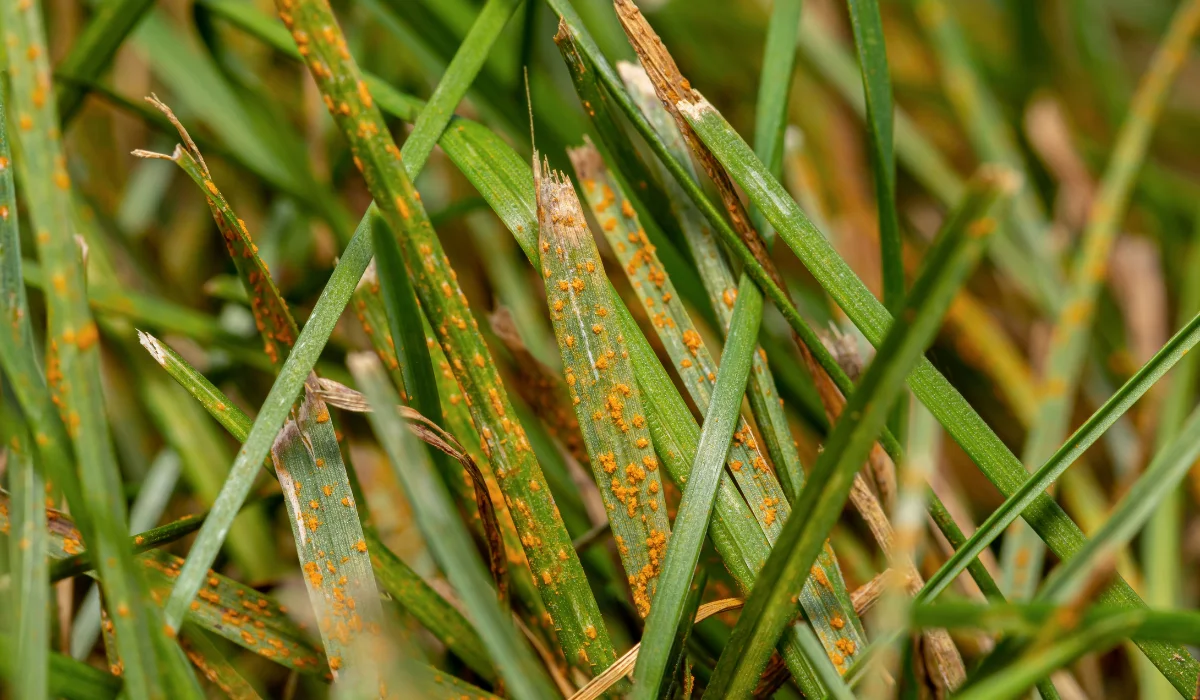
They are caused by rust fungus within the Pucciniales order, characterized by their distinctive rust-colored spores.
Aspects | Description |
Visual Signs | The most noticeable symptom is the appearance of small, rust-colored (orange, yellow, or reddish-brown) blemishes on the blades of grass. |
Affected Areas | Rust typically appears on individual blades of grass but can spread to cover large areas of a lawn. |
Development Conditions | Rust diseases flourish in high humidity conditions, warm days, and cool nights. |
Brown Patch
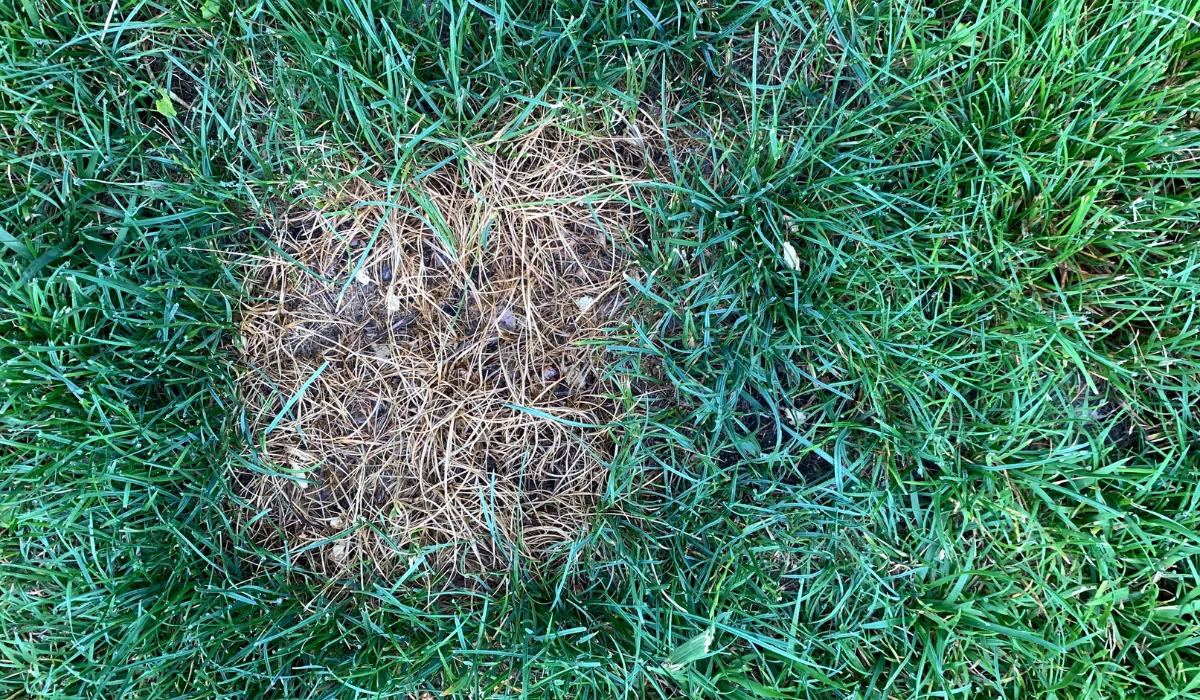
This disease, caused by the brown patch fungus Rhizoctonia solani, commonly affects fescues, St. Augustine grass, and Zoysia grass.
The symptoms of brown patch disease include:
- Patches of brown spots in dead grass, ranging from a few inches to several feet.
- Lesions on grass blades that are tan in color and irregularly shaped.
- Affected areas may have a smoke ring border during high humidity.
Dollar Spot
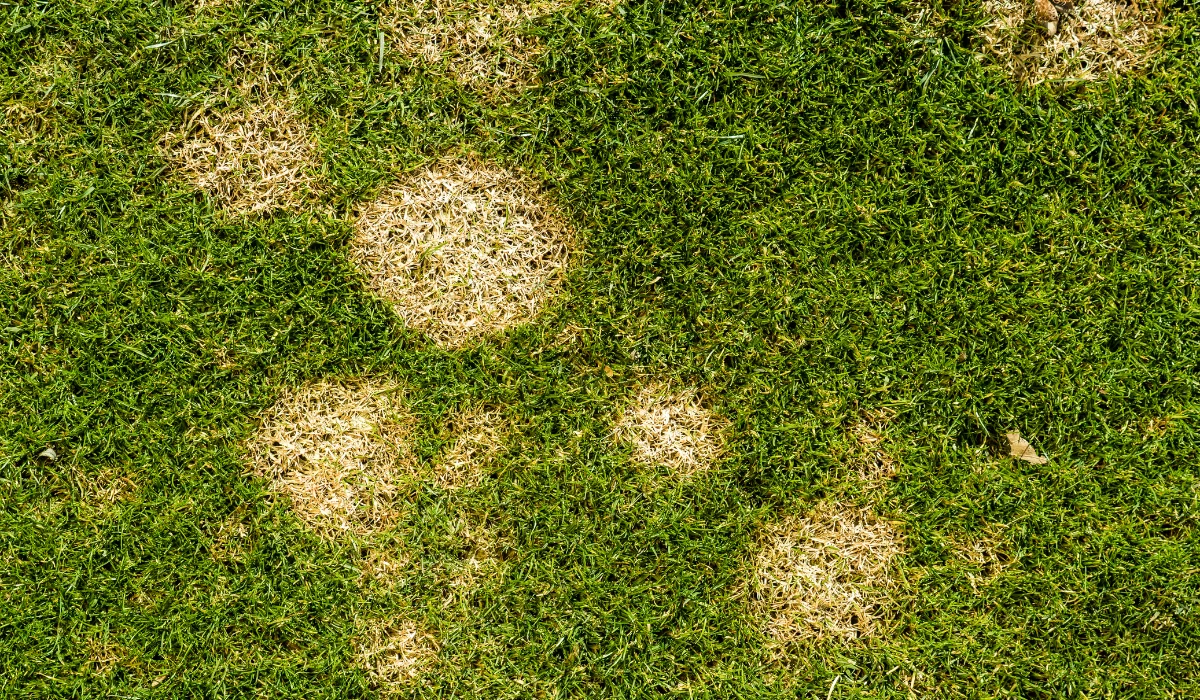
Dollar Spot is caused by the fungus Sclerotinia homoeocarpa. It is a widespread lawn disease affecting various turfgrasses in various climates.
To help you spot the distinctive Dollar Spot, here are the identifiers and conditions you must know of:
Symptom/Condition | Dollar Spot |
Size of Patches | Size of a silver dollar |
Appearance | Straw-colored; sunken centers |
Affected Grass Types | All types of turfgrass |
Favorable Conditions | Dry days, high humidity at night |
Treatment | Fungicides and proper lawn care |
Fairy Ring
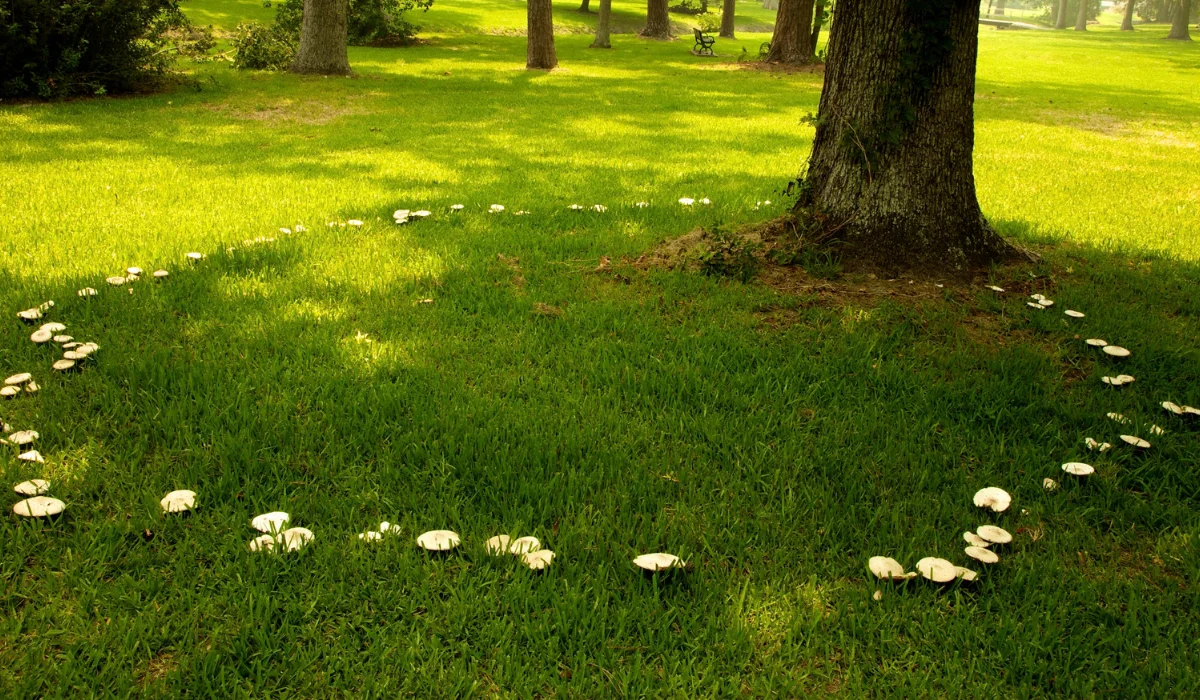
Fairy Ring is a common lawn disease caused by various fungi in the soil. It causes grass to form circular or arc-shaped patterns. Other unique signs include:
- Mushrooms grow in a ring or arc pattern.
- Dark green circular patches where the ring is active.
- Soil within the ring may feel water-repellent.
Here are the critical steps in identifying this lawn disease:
Look for rings or arcs of dark green grass.
Check for mushrooms along the ring, especially after rain.
Conduct soil testing for fungi if suspected.
Pythium Blight
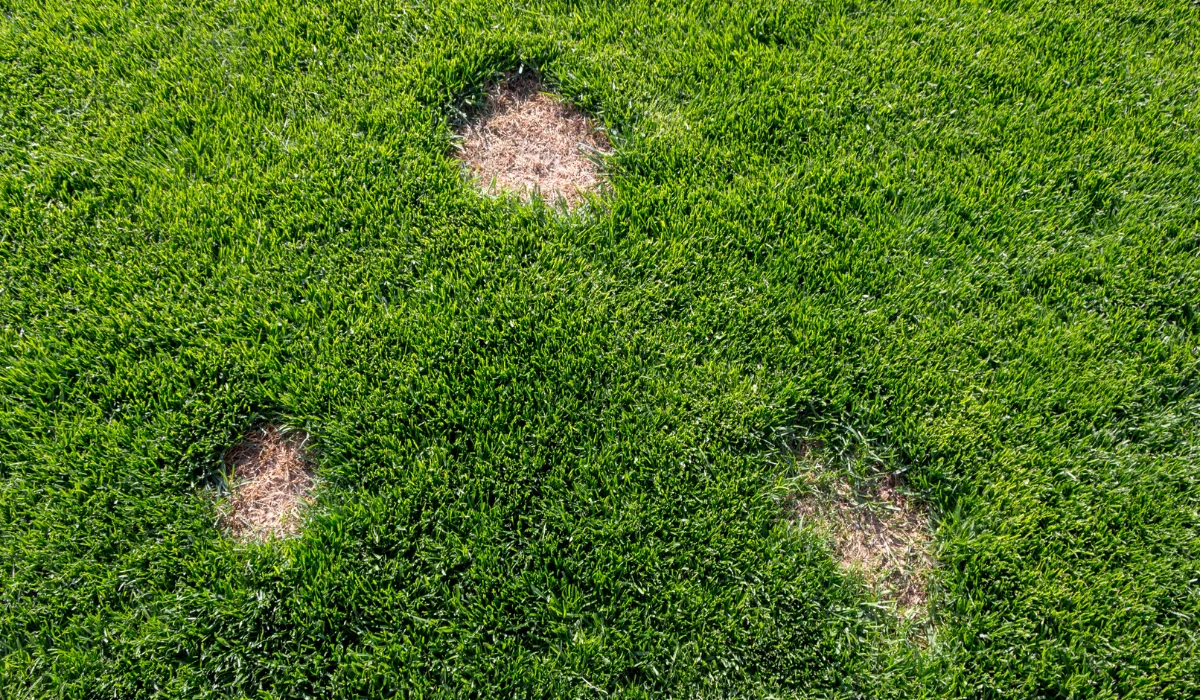
Pythium Blight is caused by the fungus Pythium aphanidermatum. It is a severe lawn and turfgrass disease that thrives in hot, humid conditions.
Here’s how it rapidly progresses to a lethal lawn disease:
Stages of Pythium Blight | Symptoms |
Initial | Small, dark, water-soaked spots |
Spreading | Spots merge into larger, irregular areas |
Advanced | Fluffy, cotton-like fungus appears on grass blades |
Take-All Root Rot
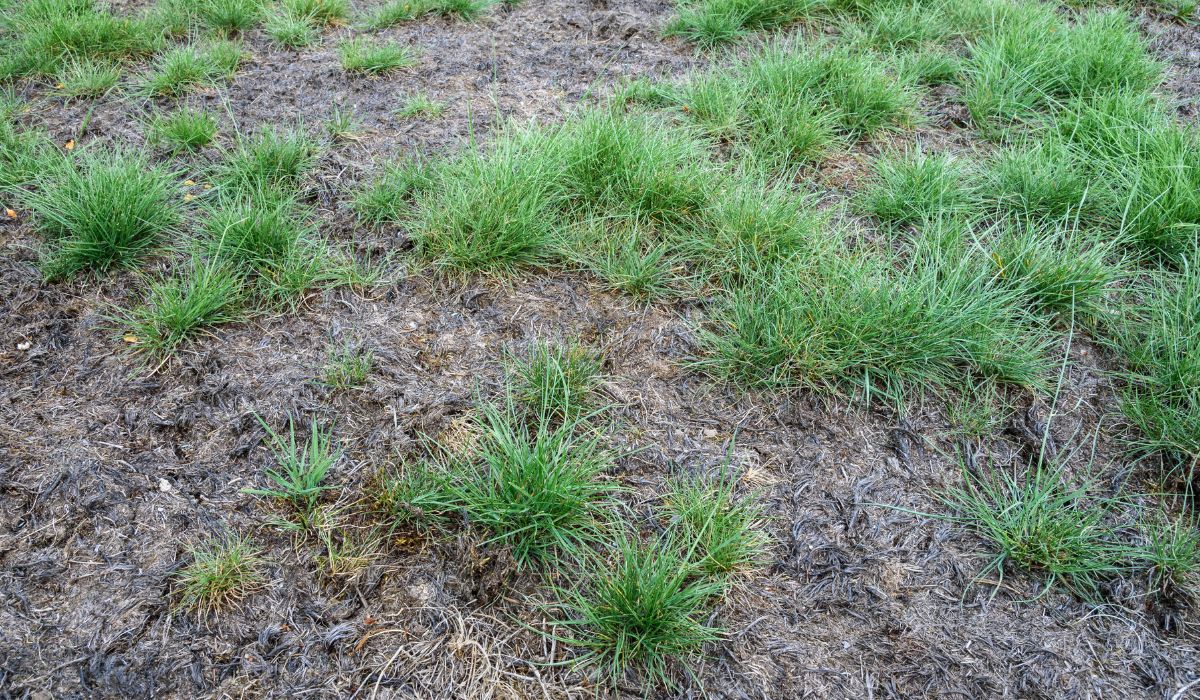
Caused by the fungus Gaeumannomyces graminis, Take-All Root Rot is a serious soil-borne disease. It primarily affects the grass roots of turfgrasses and other plants like wheat and barley.
Symptoms and impacts of Take-All Root Rot include:
- Grass thinning and yellowing.
- Darkened, rotted root system.
- Patches of dead grass that don’t recover.
How to Prevent Lawn Diseases in Florida
Maintaining a healthy lawn in Florida involves understanding how to prevent and manage common lawn diseases.
Cultural Practices
Developing good cultural habits is fundamental for keeping lawn diseases at bay. Here are the best practices to help prevent lawn problems:
- Watering: Water deeply but infrequently to encourage strong root development. Overwatering can lead to diseases, especially during hot summer, by promoting a humid environment conducive to pathogens.
- Mowing: Keep mower blades sharp and mow at the correct height for your grass type. Dull blades can tear grass, leading to stress and disease. Regular mowing helps to prevent thatch build-up and maintain a healthy lawn.
- Fertilization: Employ a balanced fertilization program suitable for your specific type of grass. Over-fertilization can increase disease susceptibility, while under-fertilization can lead to weak growth.
Chemical Options
Chemical pesticides or fungicides are critical in disease management when cultural practices are insufficient.
Here’s a closer look at the comparison of common fungicides for Florida lawns:
Fungicide | Diseases Treated |
Propiconazole | Brown patch, dollar spot, rust |
Chlorothalonil | Algae, anthracnose, leaf spot |
Myclobutanil | Powdery mildew, zoysia patch, rust |
Azoxystrobin | Pythium blight, take-all root rot, anthracnose |
Natural and Organic Options
For those inclined towards eco-friendly solutions, the following list offers natural and organic methods for managing lawn diseases:
- Beneficial Microbes: Apply products containing beneficial fungi and bacteria to enhance soil health and outcompete disease-causing organisms.
- Homemade Solutions: Experiment with natural fungicides such as baking soda or compost tea. These can be effective in mild cases and enhance air circulation in the soil.
- Proper Aeration: Annually aerate to improve soil structure and facilitate the movement of water and nutrients. It reduces compaction, prevents thatch build-up, and supports a robust lawn capable of resisting diseases.
Professional Lawn Services
When it comes to maintaining a healthy lawn, challenges unique to the region's humid climate may often arise. Sometimes, the smartest move is to call in professional lawn care services.
Professionals offer different packages to tackle various issues. These often include:
- Regular Maintenance: Scheduled service for upkeep to prevent future problems.
- Specialized Treatment: Custom solutions for specific diseases affecting your lawn.
- Pest Control: Experts may provide effective pest control treatments and lawn services for maximum protection.
When to Call the Lawn Care Professionals
In sunny Florida, a lush, green lawn can be a homeowner’s pride and joy—until it starts looking less like a carpet of velvet and more like a patchy, brown sweater.
Sometimes, your love and care just aren’t enough, and that's when it's time to ring up professional lawn care services (like us, here at Native Pest Management).
We have a tool belt full of solutions and an arsenal of experience with Florida's fickly grasses and sneaky diseases. Calling us in isn't admitting defeat; it's about teaming up for the greenest lawn on the block.
